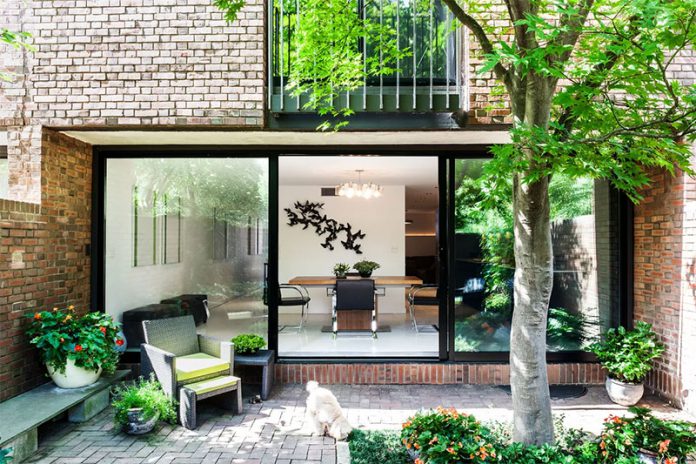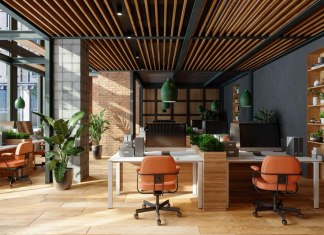Having a yard that has been landscaped to perfection is a dream for many homeowners – that is, of course, until they realize how daunting (not to mention costly) its maintenance can be.
But landscaping in Creve Coeur, MO doesn’t need to be expensive or difficult to maintain. Sustainable landscaping can be achieved with the help of your trusted landscaper.
Sustainable gardens are designed for both aesthetics and convenience. They are crafted in a way that maintains balance with the local environment and climate, requiring minimal input.
In short, sustainable landscape design should have the following qualities:
- Functional
- Cost-efficient
- Visually appealing
- Environment-friendly
- Easy to maintain
Sustainable landscaping also focuses on reducing waste, preserving limited resources, and preventing pollution in the air, soil, and water. It integrates eco-friendly practices such as composting and xeriscaping (also known as water-wise gardening).
If you’re still not sure how this can be achieved, below are three principles of sustainable landscaping that you need to learn:
1. Consider Water as a Valuable Resource
No matter where you are in the world, water will always be a necessary commodity for your garden. Besides choosing drought-resistant grass and other plants, you can also observe the following tips to save water:
Install a Rain Barrel
Aside from tackling runoff, a rain barrel can help you gather precious rainwater and turn it into a sustainable water source for your yard.
What makes rainwater so good for plants? For one, it is 100 percent soft water and doesn’t contain chemicals and salts usually present in groundwater and other city water sources. Plus, it is only slightly acidic – and quite naturally, too – and contains nitrates that are crucial for plant health.
Deal with Leaks
Based on the United States Environmental Protection Agency’s records, even one leak that measures 1/32-inch in diameter wastes over 6,000 gallons of water every year. What’s worse is that outdoor leaks usually go unnoticed.
Just imagine how much water would be wasted if you have several leaks in your hose, emitter, or sprinkler system.
If you seek help from a competent landscaping company in Fenton, MO to maintain your lawn, you’ll have less to worry about as checking for leaks is part of their routine. But if you maintain your own yard, you must remember to schedule a weekly leak inspection.
Mulch Thickly
Mulching thickly helps keep the roots of plants cool and retains moisture in the soil. With organic mulches like shredded bark and wood chips, you even get more nutrients into the soil over time. Just remember that different kinds may be more appropriate in various situations, so be sure to pick your mulch carefully.
Water the Soil, Not the Leaves
Watering is an essential task in gardening and yard maintenance, but you have to ensure that you’re watering the right parts of the plant. Besides saving water, watering the soil just above the root zone helps keep it healthy and prevents sunscald and fungal disease on the leaves.
If you intend to have an irrigation system installed, make sure to ask for professional help regardless of the type of system you want. Besides drip, you can also choose other types of sprinklers, so long as you remember that the water should go to the soil and not the leaves.
Use Reclaimed Water
Using reclaimed water is a great way to conserve the resource. Plus, it helps reduce the need to use potable water and well-water for irrigation, allowing you to use them in other situations.
Avoid Overwatering
It may sound over-simplistic, but the truth is that overwatering causes more water waste than any other reason. Besides squandering this precious resource, it can also cause stress to the plants’ roots systems and potentially increase the risk of disease and root rot.
2. Know Your Soil
Apart from water, the soil is also a valuable-but-limited resource in landscaping and gardening. It serves as one of the foundations of a sustainable landscape and works to nourish your plants and prevent erosion.
Fortunately, there are ways to ensure the health of your soil while reducing or eliminating runoff and soil erosion. These include:
Regular Aeration
When aerating, you punch small holes into the soil to allow water and the necessary nutrients to reach the roots of the grass and plants easily. Do this twice a year to improve the quality of the soil and maintain your plants at the same time.
Composting
Composting is an environment-friendly practice that helps nourish the soil and keep it moist all year round. Since it makes use of food scraps that normally go into the garbage pile, composting also serves as a cost-effective way to fertilize your plants while reducing waste buildup in landfills.
Mowing High
Believe it or not, mowing is an important part of keeping soil healthy. By keeping the mowing height at about three and a half inches or 2/3 of the grass length, you get a more sustainable lawn with strong grass roots that prevent nutrient loss and soil erosion.
3. Go Native
When it comes to sustainable landscaping, your first choice in flora should always be native species. Of course, the types of plants you can choose from will depend on your location.
For those living in Missouri, some of the best-performing plants that the Grow Native! Program of the Missouri Prairie Foundation swear by are:
- American beautyberry – Measuring between three to five feet when full grown, this shrub features pink summer blooms and purple fruits in the fall.
- Aromatic aster – This two- to three-foot-tall plant offers lavender-colored flowers that bloom in the fall and provide for pollinators.
- Copper iris – This 18- to 24-inch-tall plant can help brighten the months of May and June with its coppery-red
- Little flower alumroot – Growing only up to one foot tall, this plant produces white flowers that bloom during the autumn and is most suitable for small gardens due to its compact size.
- Orange coneflower – Coneflowers only grow between one to two feet tall in rain gardens and work great as ground cover.
- Prairie dropseed – This fine-textured clump-forming grass grows to about 18 to 24 inches under full sun.
- Wild hydrangea – Thriving in the sun or partial shade, this big shrub can grow as tall as three to five feet.
Sustain Your Landscape
Landscaping offers plenty of benefits to a property beyond aesthetics, especially when sustainability is observed. Follow the principles listed in this article to ensure that you reap the benefits of your property landscape.















